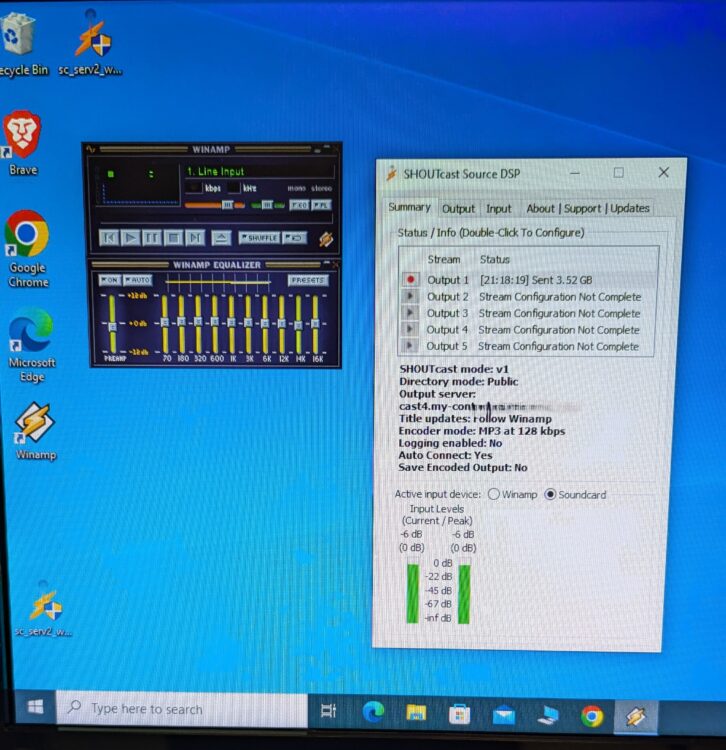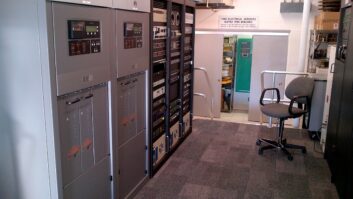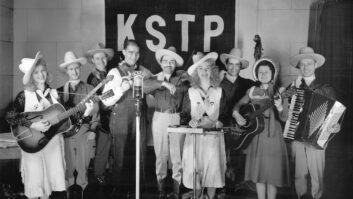Your phone rings. The caller is interested in starting a small local radio station and they’ve been referred to you by a mutual acquaintance. How can they get started?
I hear this question a lot from radio “wannabes.” Maybe you do, too. The query triggers a mental checklist, which you share with the broadcast hopeful: “Are you familiar with paths to identify a broadcast opportunity and pursue a construction permit? Have you investigated stations that might be for sale? Do you have an FCC attorney? Have you looked into low-power FM? Do you have a budget for the equipment to put a station on the air? Do you have a sensible broadcast business model or funding development plan?”
Even the most basic questions tend to produce a rather short conversation, and the caller is never heard from again. This leaves both of you vaguely disappointed. But starting an FCC-licensed radio station can be daunting to the average person once they understand what’s involved.
Yet individuals who dream about starting a station no longer have to be satisfied with this dead end. The best way to do so does not even require a frequency or a license.
For very little money up front, the internet has become an excellent radio station incubator.
This isn’t news, of course. Audio streaming has been around long enough that it hardly even qualifies as a new medium. And yes, an online-only station may not qualify as “radio” in the over-the-air sense.
Yet I still hear from “radio wannabes” quite often. The idea of radio retains a magical aura for many people. And when we meet someone who has a passion for creating good, entertaining audio content in a radio format, we should encourage them to try it where the stakes are low and the bar to entry is even lower.
I’m not here to offer a detailed primer, but the next time someone asks the question, you might share the following thoughts.
There are so many advantages to starting on the internet that it is difficult to list them all. The software needed to get started can be free. Simple automation for 24/7 operation can be done with one of several available free or inexpensive software packages. Setup for streaming their content can be done easily with free downloads of Winamp and Shoutcast.
Winamp is an all-purpose media player that can play back many different types of audio. Shoutcast is a service that streams audio over the internet to media players that are incorporated into almost all devices. The internet is loaded with videos to help your caller learn how to stream their “radio” station.
Your new friend will need to have access to the internet and a resource to allow the single stream coming out of their streaming computer to be heard by many listeners.

[Related: “Fix Common Problems in Audio Streaming”]
How much will it cost to stream the station? The two most common choices are to be charged by listener or to pay a flat monthly fee. The streaming service may offer some savings if it can add ads into the station stream. I advise my callers to look for a streaming provider that has a reasonable monthly charge to accommodate hundreds or thousands of users. One example is Asura Hosting, which has plans for less than $15 per month; they have excellent customer service and will help with the configuration.
Once registered, the streaming service will email your person a Host Address, Port Number and Password, which they will enter in fields in their Shoutcast software. Listener access to the stream will be through a link provided by the streaming service. This link is typically put behind a “click here to listen” button on the new station’s webpage, or used to set up access through smart speakers, but the link will also work in typical internet browsers.
Setup for Amazon Alexa can be completed by hiring someone through fiverr for as little as $25. (On the site, search for Alexa Skills.)
A computer that runs Windows 10 is sufficient for streaming, though Windows 11 would be better for long-term support from Microsoft. Some streamers are using computers that cost as little as $50 through Shop Goodwill. I prefer using separate computers, one for the automation software, one for the streaming.
A detailed discussion of music licensing and copyright is beyond the scope of this article, but you should encourage your caller to explore the royalty and legal considerations that apply to a small streamer.
There are blanket licenses that allow usage of copyrighted music for streaming stations. Generally, the cost is based on the number of listeners to the station, which is tracked in the Shoutcast software.
Licensing expectations vary from country to country. For example, if an internet radio station in the United States is playing Swedish music, the artists are probably not covered under a blanket license from a U.S. company.
Also, there are different rules for internet radio stations to play in various countries. It may be necessary to use the filters in the Shoutcast software to block listeners from certain countries from accessing the stream.
One useful source of information is live365.com. They will help with the entire process of creating and distributing a station, including handling the necessary licensing for stations in the U.S., Canada and the U.K., though the service can be expensive. (On their website, scroll to the bottom of the page and click the Resource tab to find a useful article titled “How to Start a Radio Station.”)
Also encourage your caller to give careful thought to what they actually want to accomplish with their station. Many start with only a vague concept and have given little or no practical thought to how they will sustain it for the long term. But again, such issues can be worked out as the internet station grows.
Social-savvy station operators can build global listenership through TikTok, Instagram, Facebook and other platforms. If an online station is successful, perhaps it will lead the owner to seek out a broadcast license. Or they’ll like what they’ve built and realize that this easy, affordable, online format is sufficient.
Monetizing an online radio station is also a topic for another day. My point today is that the next time the phone rings, you can offer the caller encouragement to jump in. Audio streaming offers an easy starting point for a “wannabe” who wishes to explore the creative process that is radio.
The author wrote recently about things engineers learn the hard way.







